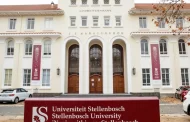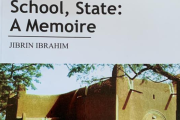
The author
By Terngu Sylvanus Nomishan
Three key themes: Tiv identity, Swem, and the Cross, form the foundation of this discourse. This discussion aims to highlight why the Tiv people must recognize the importance of preserving their cultural heritage rather than embracing foreign religious symbols at the expense of their own traditions. Every ethnic group in the world has a unique identity, and this identity serves as a distinguishing factor. Without a clear identity, the Tiv people risk losing their cultural significance. The critical question here, therefore, is what role the Cross plays in the identity of the Tiv people of West Africa. Other questions include, who are the Tiv people? What does their identity signify? These are questions that require thorough interrogation.
The Tiv people are known for their bravery and resilience. Historical accounts depict them as hardworking individuals who abhor idleness. Throughout history, they were recognized as one of the most formidable groups in Africa. Pre-colonial narratives describe Tiv arrows as being among the deadliest, capable of subduing enemies effectively (Akiga, 1939; Gbor, 1974; Makar, 1994; Nomishan, 2020). As dedicated farmers, the Tiv found the Benue Valley to be an ideal agricultural hub, prompting them to sacrifice everything to secure the land as their permanent settlement.
The early Tiv people understood the interplay between nature, spirituality, and the supernatural. They did not adhere to abstract belief systems, particularly when it came to matters of sacrifice. The Tiv culture upheld honesty, and deception was strongly condemned, in contrast to modern religious practices that often involve manipulation. Swem was the ultimate symbol of truth and justice among the Tiv, ensuring that individuals remained honest and truthful.
It is crucial for young Tiv individuals worldwide to understand that Swem is not a religion on its own, but a fundamental aspect of their cultural identity. It serves as a heritage that sets the Tiv apart from other African tribes. As explained by Nomishan (2021) in “Swem: The Tangible and Intangible Cultural Heritage of the Tiv of Central Nigeria, Swem holds dual significance in Tiv oral traditions. On one hand, it represents the last point of dispersal where the Tiv entered the Middle Benue Valley; on the other, it symbolizes the great oath of justice, an anti-tsav force that combats the evil practices of the Mbatsav group (Akiga, 1939; Bohannan, 1958). In his book Heritage, Memory, and Identity: New Perspectives on the Swem Oath, an African Traditional Justice System, Nomishan wrote thoroughly about the role of Swem as a traditional justice system of the Tiv people, separating it from a mere religious dogma.
Some religious figures, including pastors and reverend fathers, erroneously label Swem as an evil object that should be discarded. Such assertions stem from ignorance and should be dismissed. Christianity preaches trust, justice, faithfulness, and sincerity, but how can these virtues be objectively measured using the Bible? Many religious teachings defer judgment to an ambiguous “last day”, making accountability difficult. Swem, on the other hand, offers immediate justice, which is why evildoers fear its continuity in Tivland.
The Cross is widely recognized as the symbol of Jesus Christ’s crucifixion, his sacrifice, and resurrection. It is also emblematic of the Christian faith and salvation. Jesus of Nazareth, the central figure of Christianity and the Cross, is believed by most Christian denominations to be the incarnation of God the Son and the prophesied Messiah from the Davidic lineage.
With an understanding of Tiv identity, Swem, and the Cross, one must ask: which of these symbols should represent the Tiv in their actions, interaction with neighbouring groups, and even on a Benue State Coat of Arms? However, while the Tiv are the majority ethnic group in Benue, the state also accommodates other groups, so there should be caution in discussing the state’s coat of arms and tribal symbols. Nonetheless, this discussion is not about Benue State’s representation but rather about the cultural preservation and identity of the Tiv nation.

Prof James Ayatse, the incumbent Tor Tiv
Presently, the Tiv people face numerous challenges. Internally, political struggles among Tiv elites have led to divisions, disunity, and a loss of respect for elders and communal values. This destructive political climate has resulted in property destruction, manipulation, and even the loss of lives. Externally, Fulani herdsmen, in collaboration with some neighbouring groups and a few compromised Tiv individuals, have continuously ravaged Tivland. In the face of these threats, the Tiv Traditional Institution remains indifferent, failing to act decisively to protect the Tiv people.
Swem has always been a symbol of truth, faithfulness, and sincerity. It represents the great oath of justice between the supreme God and the Tiv ancestors as Ndera shows in Wombo Makar. Swem played a crucial role in maintaining justice, unity, and love among the Tiv. It also provided protection against external threats. Why, then, has the Tiv Traditional Council abandoned this rich heritage under the guise of Biblical teachings?
Can the Tiv people instil courage and unity through prayers alone? Can the Tiv nation hold their political leaders accountable through the Bible? Can elders effectively hold wrongdoers accountable using the Bible? Can the Tiv people gather, reaffirm their collective strength, and confront their adversaries by solely relying on Biblical verses? These are pressing questions that demand honest reflection.
Tiv communities, including Kwande, Ukum, and Shitire, are under siege. The relentless attacks and destruction of Tivland continue unabated. Has praying in the name of Jesus within the Gboko palace alleviated the suffering of the Tiv people? If not, why hasn’t the Tor Tiv summoned his people to swear by Swem and prove their innocence? Where is the Swem? Why are the political leaders and all those desiring to lead the Tiv nation not swearing by the Swem for accountability and trustworthiness?
Swem has historically bound the Tiv people to principles of justice and integrity. It has served as a mechanism for dispute resolution and the maintenance of social order. However, its neglect has left a vacuum that has been filled with discord, political instability, and external aggression. Modern religious leaders have capitalized on this vacuum by discouraging courageousness among Tiv people in the name of praying in Jesus’ name without any compelling actions.
The continued marginalization of Swem raises concerns about the future of Tiv cultural heritage. The rejection of Swem in favour of foreign religious symbols even with the Tiv revered palace at Gboko, is largely weakening the collective identity and strength of the Tiv people, thereby, exposing them to greater vulnerabilities.
Thus, the survival of the Tiv depends on their ability to reclaim and uphold their cultural values. Swem should not be viewed as a relic of the past but as a living institution that continues to offer justice and unity, calling all Tiv people to maintain brevity, strengthen their courage, enchanting “aya tutu ka uno?” in the defeat of their enemies.
As modern challenges threaten the Tiv nation, it is imperative to revisit traditional mechanisms of conflict resolution. Swem, as a pillar of justice, must be reinstated to reinforce accountability and communal harmony. This is none negotiable as all the modern ways of life copied from Western nations have only seen the downfall of the Tiv nation. Religious and political influences should not override Indigenous practices that have sustained the Tiv for centuries. The indiscriminate adoption of external ideologies has diluted the strength and cohesion of the Tiv people.
For the Tiv to thrive in the face of adversity, they must recognise the power of their traditions. Swem, as a symbol of truth and justice, must take precedence over foreign influences. The future of the Tiv nation lies in the hands of its people. Embracing Swem and reinforcing its significance will restore a sense of identity, pride, and resilience. Instead of abandoning Swem, the Tiv must integrate it into contemporary governance and conflict resolution mechanisms. This will ensure that their cultural heritage remains relevant and effective in addressing modern challenges.
In conclusion, Swem is more than just a historical artefact, it is a testament to the Tiv commitment to truth, justice, and unity. To abandon it in favour of foreign symbols is to erase the very essence of Tiv identity. The Tiv people must stand firm and reclaim their heritage for the preservation of their future.
The author is a Lecturer at the Federal University, Lokoja.




























